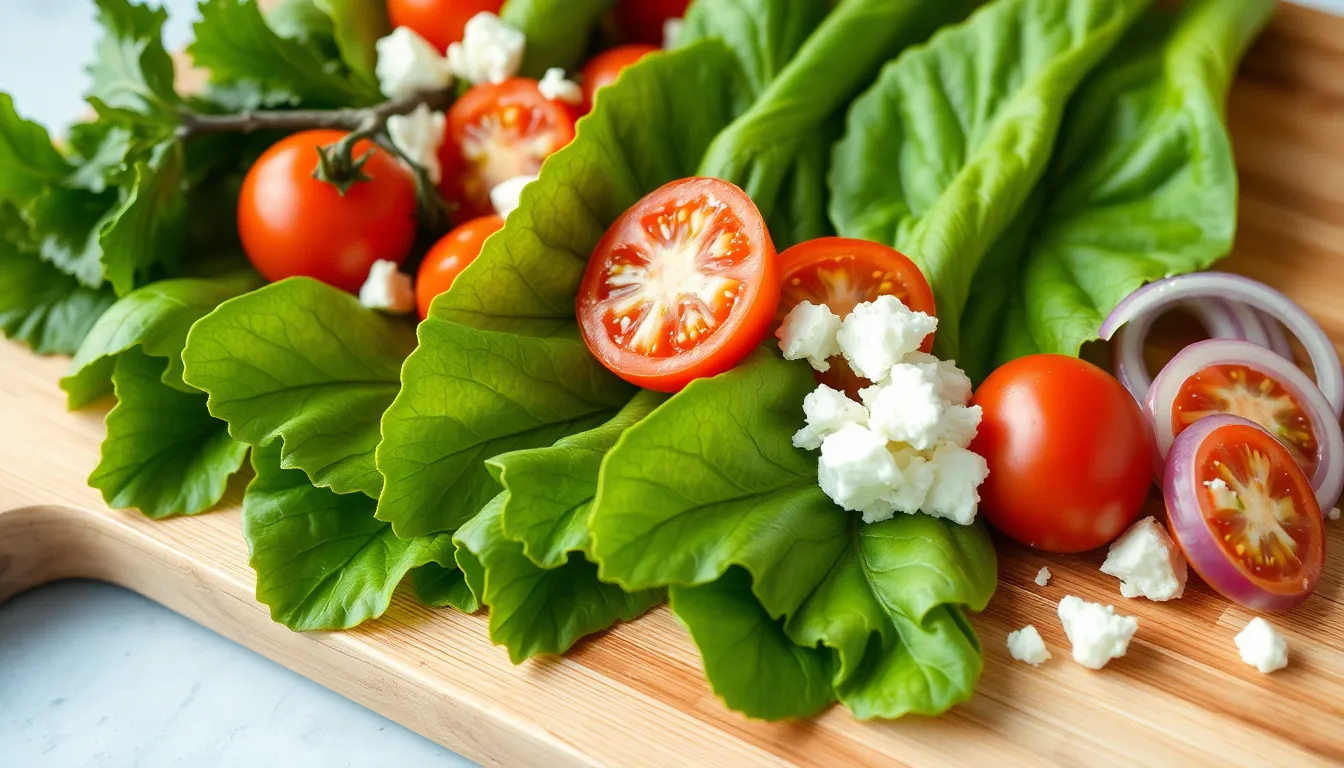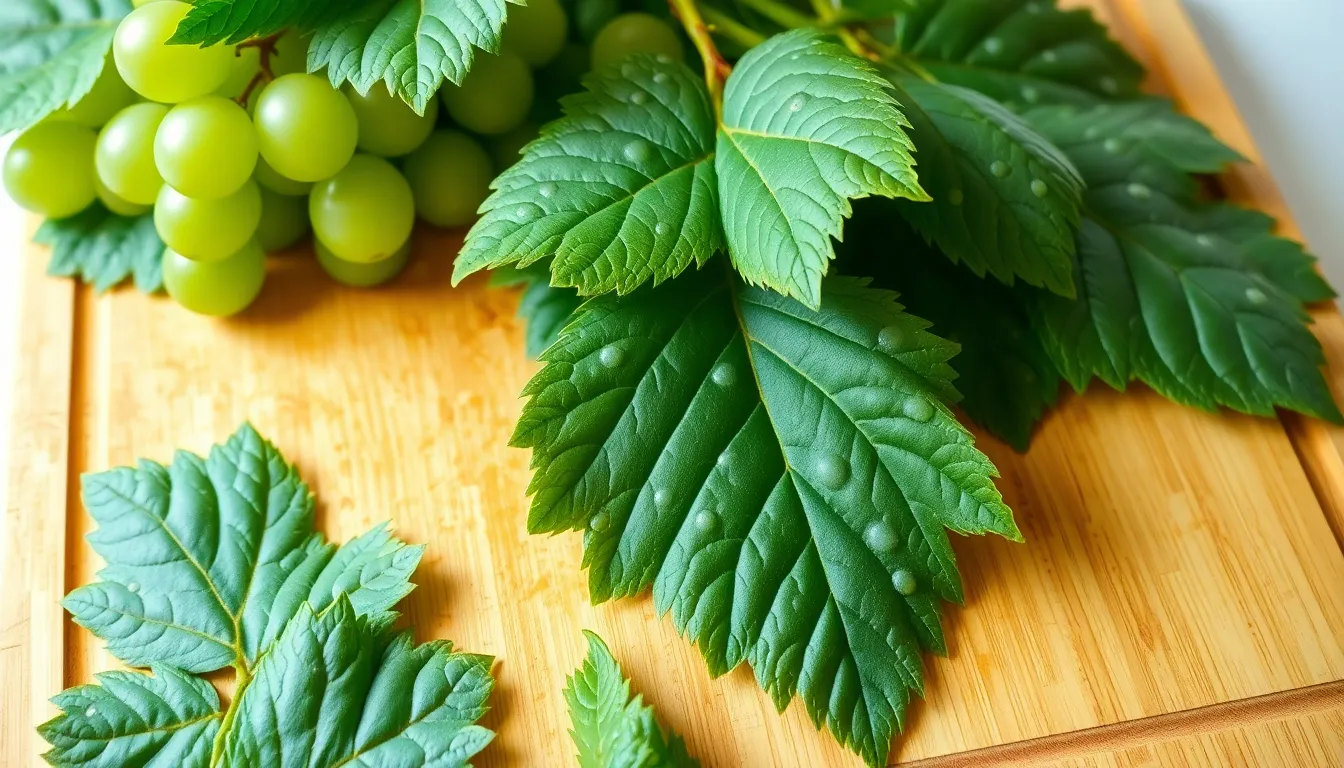
Grape Leaves Nutrition: Discover the Superfood You’ve Been Missing
Grape leaves might not be the first thing that comes to mind when thinking about superfoods, but these leafy wonders are packing a nutritional punch that could make even kale green with envy. Often overlooked, grape leaves are not just a pretty wrapper for stuffed delicacies; they’re a treasure trove of vitamins, minerals, and antioxidants. Who knew that the leaves of your favorite wine-producing plant could be so good for you?
Grape Leaves Nutrition
Grape leaves possess numerous nutritional benefits and serve various purposes in culinary traditions worldwide. Their rich composition makes them an important ingredient that’s both versatile and healthy.
Historical Significance
Grape leaves trace back to ancient civilizations, showcasing their longstanding value in global cuisines. In Mediterranean regions, they frequently appeared in traditional dishes, symbolizing hospitality and abundance. They played vital roles not only in culinary practices but also in cultural rituals. Many historical records highlight their use in different cultures, emphasizing their importance for health and nutrition. As a result, grape leaves gained recognition as a symbolic ingredient in festivities and celebratory meals.
Culinary Uses
Culinary applications of grape leaves include a variety of dishes, particularly in Mediterranean and Middle Eastern cuisines. Chefs often use them as wrappers for dolmas, which consist of rice, meat, and spices. These leaves provide a unique flavor and texture, enhancing the dish’s overall appeal. Additionally, grape leaves can serve as vegetables in salads and stews, offering a nutritious complement. Many recipes incorporate them into savory pies, showcasing their versatility. Cooking a dish with grape leaves not only adds taste but also elevates nutrition.
Nutritional Profile of Grape Leaves

Grape leaves offer a unique blend of nutrients essential for health. They provide various beneficial macronutrients and micronutrients significant to a balanced diet.
Macronutrients
Grape leaves are low in calories and contribute to weight management. Each serving typically contains about 14 calories. They boast fiber content that supports digestive health, with approximately 1.2 grams per serving. Protein content remains modest, providing about 1.3 grams, ideal for muscle repair. Fats are minimal, primarily unsaturated, encompassing about 0.2 grams. Grape leaves’ nutritional makeup supports calorie-conscious diets while delivering health-enhancing properties.
Micronutrients
Rich in vitamins, grape leaves contain vitamin A, which aids in vision and immune function. One 100-gram serving provides around 9,000 IU of vitamin A, meeting daily needs efficiently. Vitamin K is abundant in grape leaves, offering roughly 14.3 micrograms per serving, crucial for blood clotting. Grape leaves also include B vitamins, particularly folate, with 190 micrograms per serving. Essential minerals such as calcium, iron, and magnesium enhance their nutritional appeal. Each of these nutrients plays a vital role in supporting various bodily functions.
Health Benefits of Grape Leaves
Grape leaves offer significant health benefits, particularly due to their nutrient-dense profile. Their presence in a balanced diet contributes to preventive health measures.
Antioxidant Properties
Antioxidants in grape leaves combat oxidative stress within the body. Flavonoids and polyphenols are prominent, aiding cell protection against damage from free radicals. Studies show that these antioxidants play a role in reducing the risk of chronic diseases. Including grape leaves can enhance overall health through their powerful antioxidant effects. Their incorporation into various dishes not only elevates flavor but also enriches nutritional value.
Anti-Inflammatory Effects
Anti-inflammatory compounds found in grape leaves contribute to reducing inflammation in the body. These compounds, including quercetin, help alleviate symptoms of arthritis and other inflammatory conditions. Consuming grape leaves regularly might support joint health and improve overall well-being. They offer a natural way to manage inflammation through diet. Adding grape leaves to salads or as wraps enhances meals while promoting anti-inflammatory benefits.
Culinary Preparation of Grape Leaves
Grape leaves offer diverse culinary applications that enhance both flavor and nutritional value.
Ways to Cook Grape Leaves
Cooking grape leaves involves various methods. One common technique is blanching, which softens the leaves for easier wrapping and reduces bitterness. Grilling imparts a smoky flavor, making grape leaves ideal for flavorful appetizers. Stewing allows the leaves to absorb the flavors of accompanying ingredients, providing a rich taste. Sautéing offers a quick way to incorporate grape leaves into stir-fried dishes, retaining their nutritional benefits while adding texture and depth.
Popular Dishes with Grape Leaves
Dolmas represent a classic dish that showcases grape leaves. These stuffed parcels often contain rice, ground meat, or vegetables, blended with herbs and spices. Other noteworthy dishes include grape leaf salad, where fresh leaves are combined with tomatoes, onions, and feta cheese for a refreshing side. Additionally, the inclusion of grape leaves in stews or savory pies enhances overall flavor while maintaining their nutritional profile.
Conclusion
Grape leaves are a remarkable addition to any diet. Their impressive nutritional profile offers a wealth of vitamins and minerals that support overall health. With low calorie content and high fiber, they’re perfect for those looking to maintain a healthy lifestyle.
Incorporating grape leaves into meals not only enhances flavor but also promotes well-being. Their versatility in various cuisines makes them an easy ingredient to enjoy. Whether used in traditional dishes like dolmas or in fresh salads, grape leaves can elevate both taste and nutrition. Embracing this often-overlooked superfood can lead to a healthier and more flavorful way of eating.



